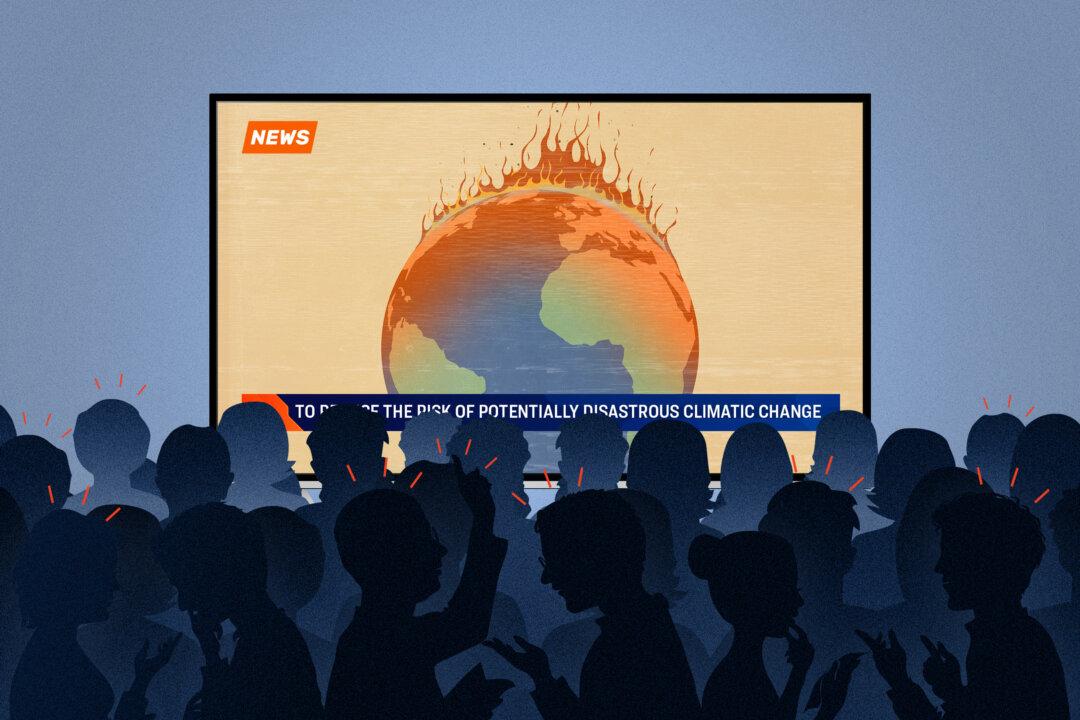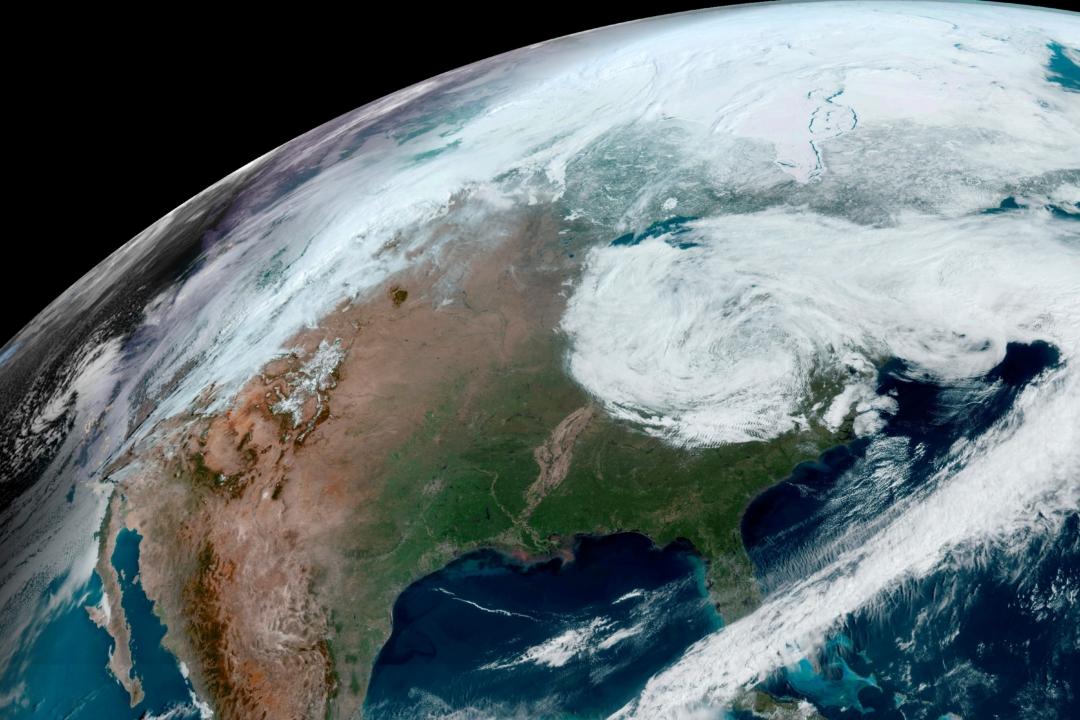“Extreme,” “hellish,” “broiling,” and “deadly.” These words, and then some, are being used by politicians and the media to describe the summer temperatures sweeping the nation.
“It’s a stark reminder of the urgent need for collective action to address climate change. Let’s use this alarming milestone to fuel our determination for bold climate action. Together, we can turn up the heat on sustainable solutions and create a cooler, more resilient world for generations to come.”
“Yes, June was hot, July was hot, globally, but not through the roof,” Mr. Ebell told The Epoch Times. “The planet is not boiling. Southern Europe has been very hot. But not everywhere is having record-high temperatures.”

And Houston experienced a 10-degree-higher-than-average temperature in July, according to NWS data. The station located at the city’s George Bush Intercontinental Airport recorded an average daily temperature of 97.7 degrees for July.
John Christy, a climatologist and professor of atmospheric science at the University of Alabama in Huntsville and the director of the Earth System Science Center, said that for long-term temperature accuracy, rural stations with at least 100 years of records are best to follow.
“Regionally, the West has seen its largest number of hot summer records in the past 100 years, but the Ohio Valley and Upper Midwest are experiencing their fewest,” Mr. Christy told The Epoch Times.
“For the conterminous U.S. as a whole, the last 10 years have produced only an average number of records. The 1930s are still champs [for producing the most 100-plus temperature days in a year].”

NOAA’s primary method for collecting data on minimum and maximum temperatures is the Global Historical Climatology Network (GHCN) stations. These are land and surface stations across the globe that measure climate data, and they’re often located in areas of high population and infrastructure.
Recording Temperature
Areas of high population and infrastructure experience higher temperatures, which in turn influence large-scale area average temperatures because most GHCNs are located where people live and work, said Roy Spencer, a climatologist, former NASA scientist, and now a principal research scientist at the University of Alabama in Huntsville. That effect, Mr. Spencer said, is called the “urban heat island.”“As we progress to higher population stations, we find that [the urban heat island] warming effect becomes larger,” Mr. Spencer reported on July 13.
Mr. Ebell agrees: “If you believe the consensus climate scientists, then the urban heat island effect doesn’t really amount to much. But, in fact, it does. And even fairly small places with asphalt will experience that effect.”
To get a more accurate reading of the Earth’s fluctuating surface temperatures in general, Mr. Spencer and Mr. Christy developed a global temperature data set from microwave data observed from satellites. They started their project in 1989 and analyzed data going back to 1979.

In 1991, Mr. Christy and Mr. Spencer were awarded NASA’s medal for exceptional scientific achievement for their work.
“It is hot in some places and not in others,” Mr. Christy said. “Globally, the temperatures continue to creep upward—but note that the 19th century was one of the coldest in the last 10,000 years, so we would expect Mother Nature to bounce back from that, aided a bit by the extra greenhouse gasses whose rise fundamentally indicates more and more people are experiencing longer and better lives.”

Climate Messaging
On July 27, President Joe Biden delivered a speech in which he stated that “record temperatures—and I mean record—are now affecting more than 100 million Americans. Puerto Rico reached a 125-degree heat index last month. San Antonio hit an all-time heat index high of 117 last month.”Mr. Biden used the heat index measurement, which combines air temperature and relative humidity, rather than temperature.
Mr. Biden said that his administration views climate change as an “existential threat.”
“I don’t think anybody can deny the impact of climate change anymore,” after this summer, he said. “The No. 1 weather-related killer is heat—600 people die annually from its effects.”

Mr. Biden said his administration plans to undertake additional steps to “make our nation more resilient in future heat waves.”
His plans include increased inspections in “high-risk” industries such as construction and agriculture, a $1 billion grant from the U.S. Forest Service to plant trees in cities, and a direction to the Department of Housing and Urban Development to ensure buildings are more “efficient” and “heat resistant.”
Mr. Biden said his administration has provided “a record $50 billion for climate resiliency to restore wetlands, manage wildfires, help Americans in every state withstand extreme heat.”
Asked about the messaging regarding the June and July temperatures, Mr. Christy said: “Every summer will see exceptionally hot temperatures somewhere. If it bleeds, it leads. A thorough look, however, at the frequency of hottest extremes indicates little relation to the gradual warming of the Earth, at least for the United States, where we have the best observations to test these claims.”

Mr. Ebell was less diplomatic, “[Climate alarmists] want to scare us into adopting expensive, pointless policies.”
He said that the Biden administration and climate alarmists aren’t “getting what they want” because the general population doesn’t support their extreme green energy and climate crisis agenda. Consequently, they turn up the rhetoric.
“You exaggerate the effects of global warming, the scare stories about storms and hot weather, and then you downplay the cost—try to explain it’s really not going to cost anything because the government will pay for it,” Mr. Ebell said.
“This is really a kind of battle between conventional energy and renewable energy. And renewable energy isn’t commercially viable. So, people are being forced to use it, to buy it, and there are various ways to force people to do that.”
Mr. Ebell said that polls show the average American is willing to pay $5 to $10 per month per family to support the transition to “greener” energy. But if it gets more costly than that, support dwindles. He added that people are already paying extra for energy.
Mr. Ebell said that since 2000, the world has spent approximately $6.5 trillion on the transition away from oil, coal, and gas. The result is the world’s reliance on fossil fuels has reduced from 82 percent to 81 percent.
“[The United States’] emissions have gone down. Our use of coal has gone down. But global coal demand is at an all-time high,” he said. “Chinese emissions are now higher than the United States, the European Union, the United Kingdom, Japan, Canada, and Australia combined.
Mr. Ebell said he believes climate change is real, but not in the way the Biden administration means it.
“They mean we’re moving into this new, scary world of weather and climate crisis. But that’s all fantasy,” he said.
“The weather is changing all the time, and human beings have something to do with it. We’re in a warming period—it’s warmed up a little bit—but that’s been mostly beneficial.”







